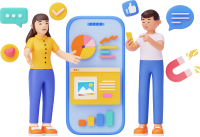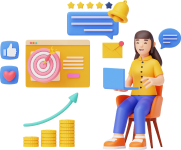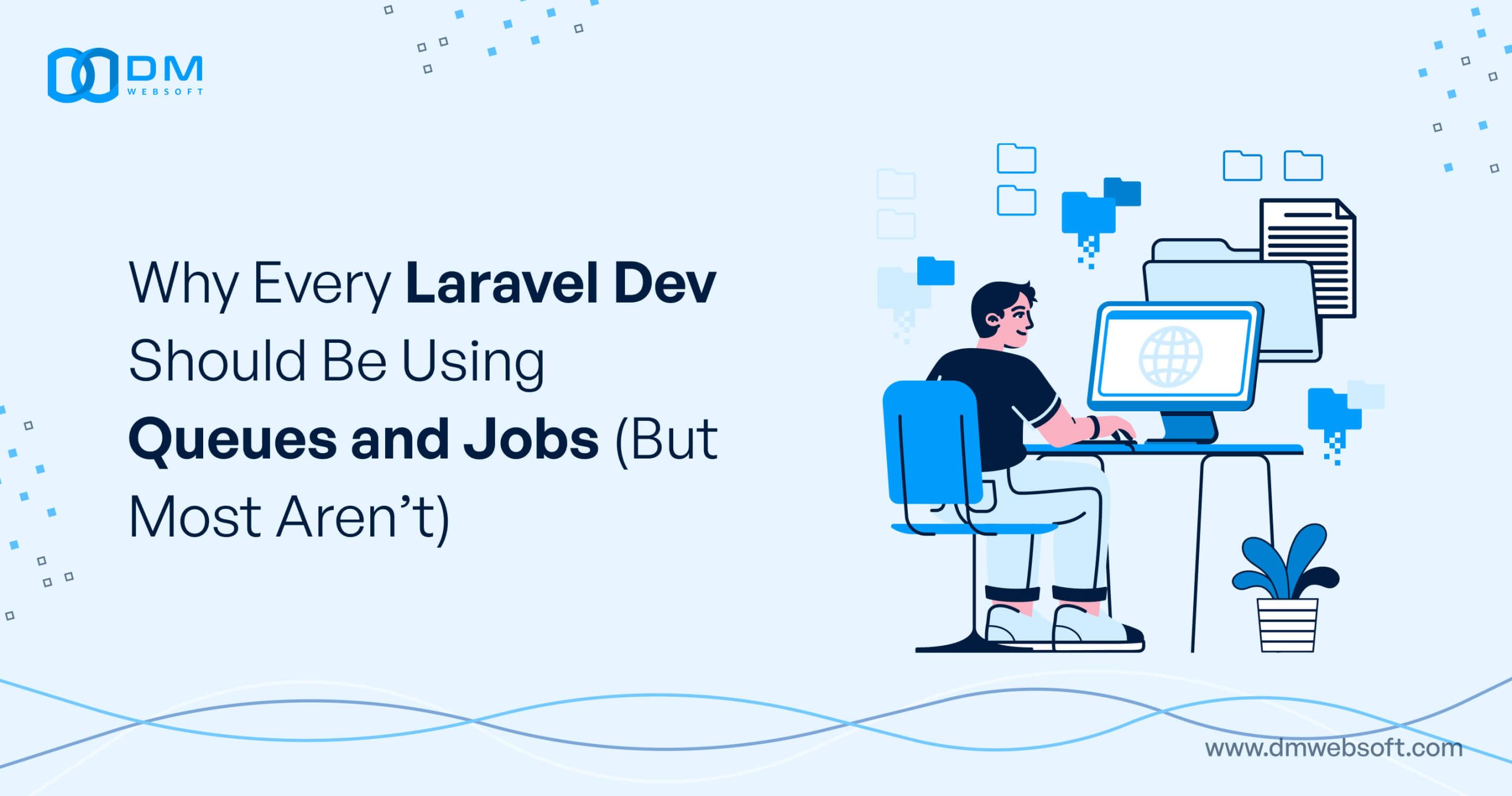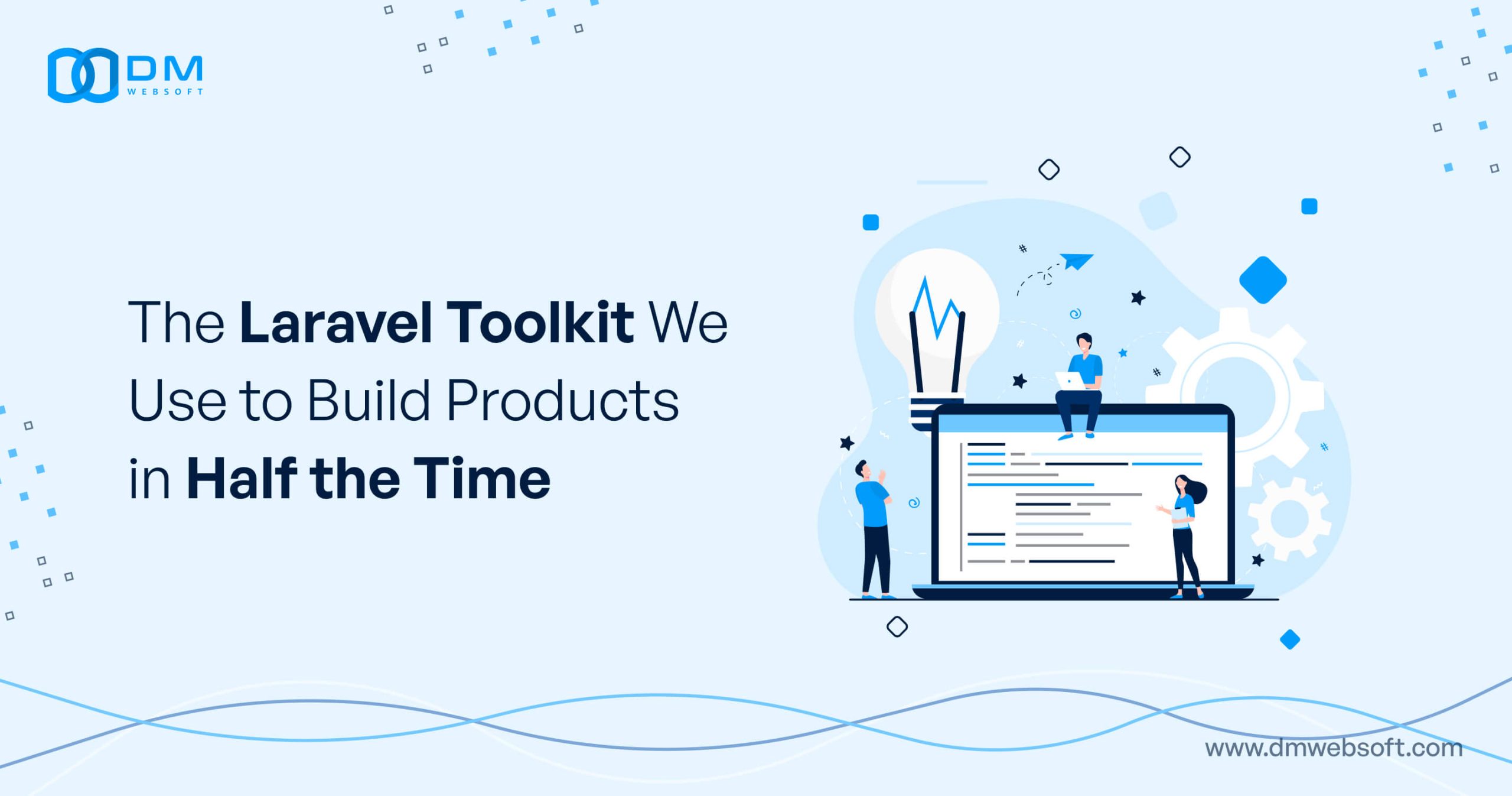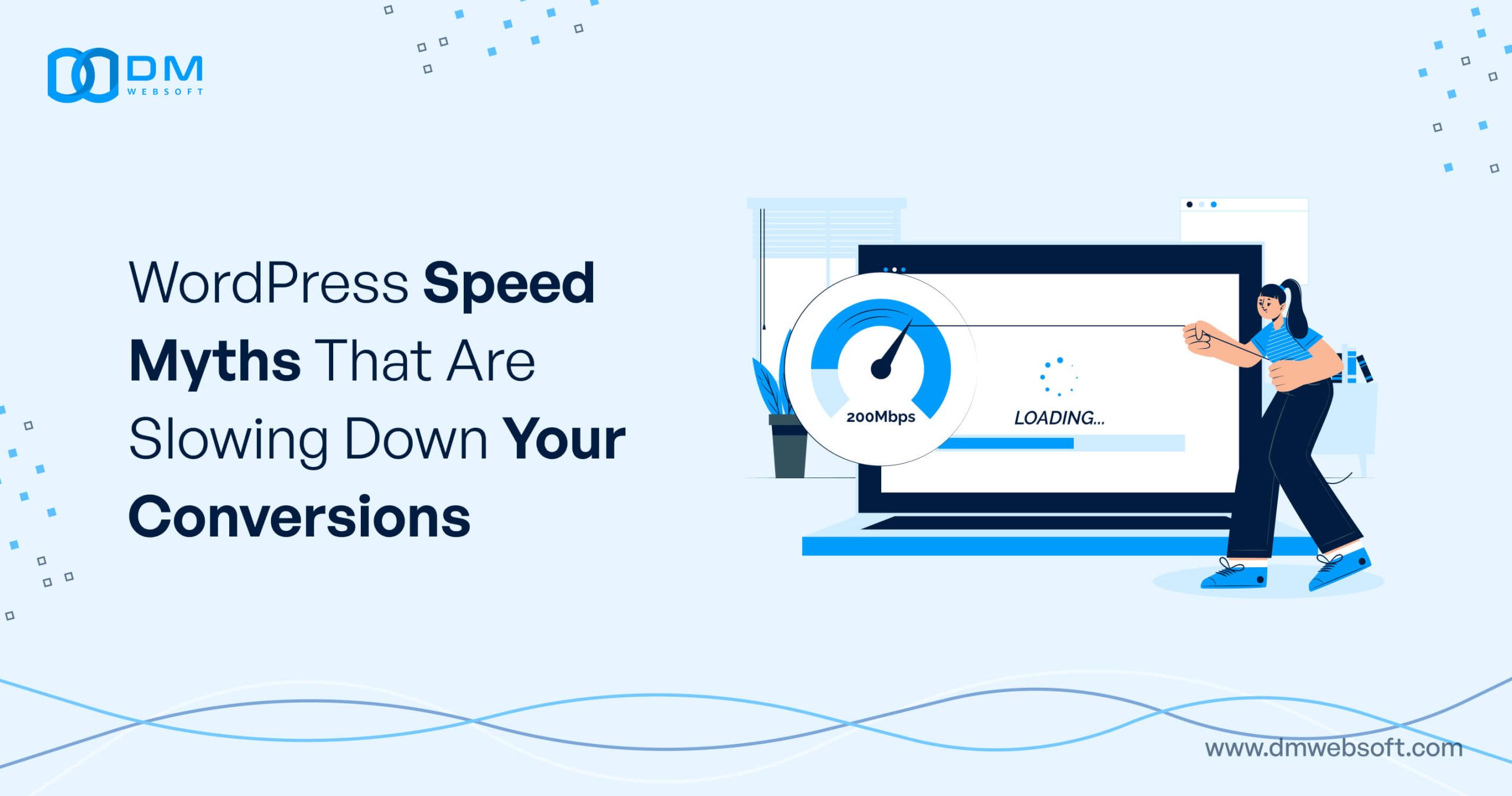DM WebSoft LLP exceeded our expectations! Their seasoned team of experts delivered a website that perfectly captures our brand essence. Their 15+ years of experience truly shine through in their exceptional web development skills.
Lifelong Learning: Keeping Up with Technology Trends

TABLE OF CONTENT
Introduction
The Essence of Lifelong Learning in Technology
Strategies for Keeping Up with Tech Trends
The Role of Continuous Tech Education in Career Development
Adapting to Technology Changes in the Workplace
Technology Learning for Professionals: Best Practices
Case Studies and Real-Life Examples
Conclusion
Get in Touch
Introduction
In such a moving environment, where changes occur in technology even faster than blinking, lifelong learning can be an advantage but actually has become a necessity for professionals. Thus, one can ensure that he keeps abreast of innovation and is capable of being at home in such a constantly changing tech environment through continued search for learning. DM WebSoft LLP believes that it is very important to spark success and fuel growth in your business. This blog gives a take on the importance of lifelong learning in technology, not only why you should do it but also how you can get that done.
The Essence of Lifelong Learning in Technology

In technological advancement, the nature of lifelong learning is just like a foundation to a skyscraper in the journey of professional growth. It concerns the construction of a mindset open to change, which seeks new knowledge and is agile in adaptation to the latest innovations. Lifelong learning with technology is not about acquiring new skills; it all comes to a curiosity that continues to drive one in knowing more about how emerging technologies can be the solution needed for problems on the ground, ways of enhancing efficiency, and unlocking new opportunities.
Lifetime kind of commitment to learning is very important in a discipline as dynamic as technology. New languages, platforms, and frameworks grow so rapidly that it makes your head spin. This is what makes practitioners develop not only an ability to keep up but also the capability to predict trends of the future and thus prepare for the same in advance. It results in the learning process being a proactive one in that people are in a position to remain ahead of relevance, competition, and development in their field.
However, lifelong learning does inculcate a culture of innovation and creativity, to say the least. It encourages professionals to think way above the conventional boundaries, experiment with new ideas, and further contribute toward the evolution of the technology itself. Learning in this regard becomes a ongoing venture where each discovery propels onto another, and the aim is not just individual but the advancement of technology altogether.
We, at DM WebSoft LLP, consider that growth is integrally associated with team learning and development. That is to say, being informed and adaptable opens us up to a lot more than only opportunities to be of service but also to make sure that the solutions we proffer are the latest technology.
Delving deeper into the meaning of lifelong learning in technology, it is to be understood that this road supersedes the boundaries of traditional education. It is to enter a symbiotic relationship with technology, wherein learning is synonymous with adjustment, experimenting, and applying. That mind-frame equips the professionals to use technology not just as a means but as a catalyst for transformation, both personally and organizationally.
In the digital age, the avenues for learning are as diverse and dynamic as the technologies themselves. Just imagine the areas in which you could potentially gain more knowledge and experience by opportunities like online courses, webinars, forums, hackathons. These are not just mediums of knowledge dissemination but collaborative communities where ideas are shared, challenges are brought up, and innovations are incubated. It is in such collaborative ecosystems that lifelong learners truly come into their own, constantly reaching to do something better than it has been done before in the use of technology.
The added commitment to lifelong learning in technology is an assurance in understanding that mastery is a moving target. It is without question the development of technology and the competencies necessary to tap its effectiveness develop with it. Such changes require mind flexibility regarding agility and resilience, knowing that the most potent instrument in the hands of any professional is his or her ability to learn. At DM WebSoft LLP, we live this philosophy in practice and understand that our might is in shared knowledge to grow. In that way, ensuring the embedding of lifelong learning in our culture assures that one does not follow along just to pace the technological revolution but makes them a force to reckon with and leads it. The commitment in such new and emerging marketplaces only deepens our service offerings but also encourages our clients to embrace the digital world with confidence and foresight.
Strategies for Keeping Up with Tech Trends
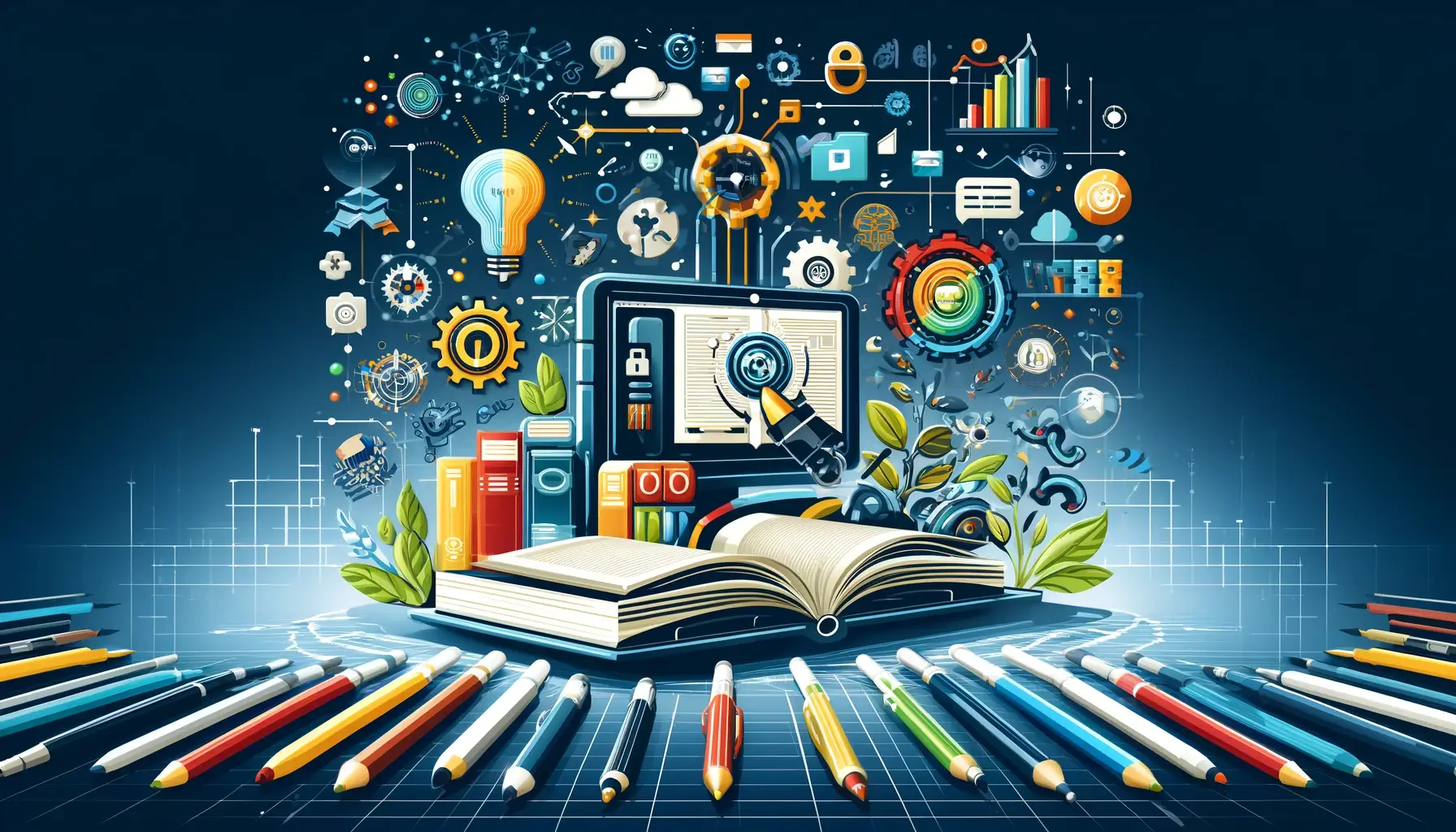
Keeping in touch with the newest technological trends is indispensable not only for any modern professional but also for companies in the fast-changing technological landscape. This very ability to keep pace with fast advancements in technology would place you apart from the rest of the pack. Here are some comprehensive strategies to ensure you’re always in the loop with the latest in tech:
- Cultivate a Culture of Continuous Learning: Encouraging an environment that allows learning and making resources available when required. Giving exposure to the employees with new and emerging technologies through training, online courses, and workshops. Organizations can encourage employees to also attend tech conferences and webinars to be ahead of the loop.
- Leverage Online Platforms and Resources: The kind of information is plenty on the internet, where there are many websites offering the newest courses on the recent technologies. Websites like Coursera, Udemy, LinkedIn Learning, and edX feature course catalogs designed by industry experts.Lastly, the stack overflow and GitHub techie forums and communities are perfect places for one to get insights into the latest trends or challenges from friends.
- Subscribe to Tech News Outlets and Blogs: Any kind of current news in technology development, corporate news, and market trends can always be sourced from some reputable sites and blogs with good repute in dispensing news as it breaks. This information can easily be obtained through the subscription of newsletters from the leading tech publications, which include Wired, TechCrunch, The Verge, among others.
- Network with Industry Professionals: This means that it will return to the construction of a strong network of professionals from which important insights will be taken with respect to trends and new technologies. This can be done through networking from various social media platforms, including attending tech meet-ups, conferences, among others. The community of like-minded professionals always keeps the learners connected.
- Implement a Learn by Doing Approach: Theoretical knowledge is, of course, necessary, but practical implementation of the concepts learned not only consolidates the understanding itself but also unmasks a whole lot of practical challenges that will eventually be met on the battlefield. Running projects that will introduce new technologies or methodologies provide one with hands-on experience and make the whole learning process efficient and rememberable.
- Encourage Cross-Departmental Knowledge Sharing: Often, this springs at the crossroads of different fields and perspectives. In this connection, interdisciplinary approaches may help spark innovation and expand the technological horizon of the whole organizational setting.
- Set Aside Time for Exploration and Experimentation: Allotting time for employees to check out new technologies or indulge in personal projects in the company could spell learning. Google’s famous 20% time policy allowed employees to spend 20% of their time on projects that interested them. This is actually how the development of products like Gmail and AdSense was conceived.
- Track and Measure Learning Progress: Setting clear learning and development objectives, tracking progress with the same kind of rigorous discipline and project management in any other area of activity, will help in maintaining momentum, ensuring that the pursuit of knowledge translates into real benefits for self and organization.
Regular review and updating of learning objectives ensure that the learning is relevant and effectively delivered. Using such strategies, professionals and organizational personnel can be at the tip of the trend in technologies, and thus, they are pioneers in applying the innovative ones. DM WebSoft LLP has integrated these approaches in order that its team remains at the cutting edge of technology, ready to embrace the latest advances and offer the best-of-the-breed to its clients.
The Role of Continuous Tech Education in Career Development

The nexus between continuous tech education and career development is undeniable in this digital era. Technology is a part of everything in business; with that proliferation, the number of skilled professionals in the field—to navigate, innovate, and lead the evolving landscape—has never been more in demand. Continuous tech education is important for any individual who is interested in the field of continuous tech. This is because the basic knowledge from continuous tech formal education is a stepping stone toward becoming skilled in advanced technologies in the industry. Here is how ongoing learning in technology fuels your career growth and development:
Personal Growth and Skill Enhancement
This goes further with continuous learning, allowing the individual to build on skills way much further than the ones equipped with initial qualifications, thus maintaining individuals relevance in such a fast-changing tech environment. Encouraging a growth mindset, it feeds into the adaptability of the individual—qualities that are very important for any particular individual to succeed in the technology environment. As professionals continue to hone and advance their knowledge base, they are opening doors to the new opportunities, roles, and challenges that would rise up to match their new expert acumen.
Staying Relevant in a Fast-Paced Industry
Technology keeps moving, and this sector never stays constant in emerging new technologies and methodologies. Lifelong learning will prepare professionals to be able not to get left behind in learning new programming languages, new software development practices, and even new technological paradigms that are established.
Staying updated with industry trends and advancements is crucial for maintaining a competitive edge in the job market.
Encouraging Innovation and Creativity
A culture to lifelong learning, among many others, will be an environment of innovation and creativity. Exposure to diverse technologies and methodologies will bring about fresh thinking and problem-solving approaches. In continuous learning, professionals are more disposed to be innovative since they draw from diverse prior knowledge and experiences, combining and reapplying them in new ways.
Enhanced Professional Networking
Often this is the result of a course of regular workshops, conferences, etc.—an opportunity for contacts. Contacts often turn out to be fresh collaborations, job opportunities, or getting privy to what’s happening within an industry and its trends. An established professional network offers support and mentorship on the way to finding access to unadvertised jobs.
Career Advancement and Leadership Opportunities
This level of commitment to learning is also something that professionals indicate toward their personal and professional development when seeking positions. Such a commitment to growth would result in faster promotions, as those same people typically are seen as good future leaders who will be able to lead the company in technological advancement and growth.
Contribution to Organizational Success
It is these employees who add value to their organizations through allegiance to continuing education on this technology. They bring in learning and skill of the latest period into their jobs, expected to enhance productivity and efficiency, besides innovating continually.
Agile organizations that foster learning on a continuous basis are better positioned to adapt to fast changes taking place in technology and become successful in their efforts to go digital.
Global Perspective and Cultural Competence
Most often, the tech education usually exposes the experts to the global trends and perspectives that will increase the competency of the culture and knowledge regarding various global markets. In a world where business activities over the border are ever-increasing, this view is valued and perceived as imperative.
Economic Benefits and Job Security
These majors promise graduates more career opportunities, the upper hand at the workbench, and more revenue because the course is professionally relevant and guarantees job security in an economy that is increasingly being taken over by technology. Professionals can get paid more because they will have all the updated and relevant skills and knowledge. Moreover, by continually adding to their skill set, they reduce the risk of their roles becoming obsolete. Continuous education in relation to technology really goes beyond just trying to keep pace with new technologies. It becomes an active effort of discerning where the technology is heading, embracing and becoming part of innovation, and contributing to the collective movement within the respective field.
At DM WebSoft LLP, we understand the pivotal role of ongoing learning in career development. We will develop a culture of improvement by our team, encouraging them for seeking knowledge and skills to further our mission by delivering our clientele state-of-the-art solutions.
Adapting to Technology Changes in the Workplace

The challenge to adapt to changes in workplace technology is multifaceted, and a strategic approach has to be taken in order to ensure smooth transitions, while at the same time, minimizing impacts on productivity. In the modern-day digital revolution, new tools and systems are happening on a day-to-day basis. Organization management and their personnel should be ready to be agile and change-oriented. Based on the above, business investigation ensues on how they would adapt to technology change in the workplace.
- Fostering a Culture of Innovation and Flexibility: The first step toward adapting to technology changes will, therefore, have the organizational culture that appreciates much flexibility and innovation, including encouraging a mind frame where the opportunity of change is viewed rather than the threat it poses. An environment that lauds creativity, experimentation, and investment in the adoption of new technologies will smoothen the transition to full-blown operations.
- Continuous Learning and Skill Development: In place, this means that the company has employees who are equipped with the demanded skills so as to adapt to the changes in technology. This denotes the offering of continued training and professional development in accordance with the specific technologies that are in place.Employers should be committed to such learning and invest in effective platforms of learning, workshops, and seminars that will keep the workforce adept and ready to leverage new tools and systems.
- Inclusive Planning and Communication: Effective adaptation involves involving all the stakeholders in both the planning and implementation phases for the technological changes. Transparent communication over the reasons for the change, benefits, and impact on roles and workflows will help reduce anxiety and build support. Get input from employees on the transition, and it will be a more insightful and owned transition.
- Pilot Programs and Phased Rollouts: The approach allows testing and tuning in a controlled environment, while pilot programs bring new technologies into the company. In that way, potential challenges and training needs could be identified for the full rollout.Therefore, the phased approaches also benefit the adoption, where the new technology is brought slowly into the various arms of the organization over time to smoothen the transition and also to bring about changes based on the responses of the users.
- Leveraging Change Management Principles: This will make the change for new technologies more structured, following proper principles of change management. This will deal with how the change should be prepared, how to manage the transition, and how to reinforce the adoption of new systems.Effective change management ensures that the employees buy in to support the process of implementation of the new technology and inculcate it into the operations of the organization.
- Providing Robust Support and Resources: It is, therefore, essential to provide necessary resources and support to the employees in the process of introducing and after implementation of new technologies. They may include online resources, help desks, and peers who may help in answering some questions and challenges posed. Adequate support helps mitigate frustration and ensures that employees can effectively use the new technology.
- Monitoring and Feedback Mechanisms: After using the new technologies, organizations should follow up the impacts developed on workflows, productivity, and staff satisfaction. Regular check-ins and feedback mechanisms give opportunities for the sharing of experiences and suggestions by the employees to make changes. Continuous evaluation would be helpful for the organization to make necessary changes and ensure that the technology actually goes to its intended goal.
Celebrating Successes and Learning from Challenges Recognizing and celebrating some of the successes in adopting new technologies can boost morale and make real the value of innovation.
Equally, open sharing of the challenges and lessons learned can enhance a culture of continuous improvement and resilience. Adapting to technological workplace changes is a continuous process that has to be undergone through strategic planning, effective communication, and ongoing support. We know very well the value of moving with the time at DM WebSoft LLP, and hence, we are really fast in integrating the latest technologies in our workflows. This definitely helps us remain competent in the currently growing market through this really proactive approach.
Technology Learning for Professionals: Best Practices
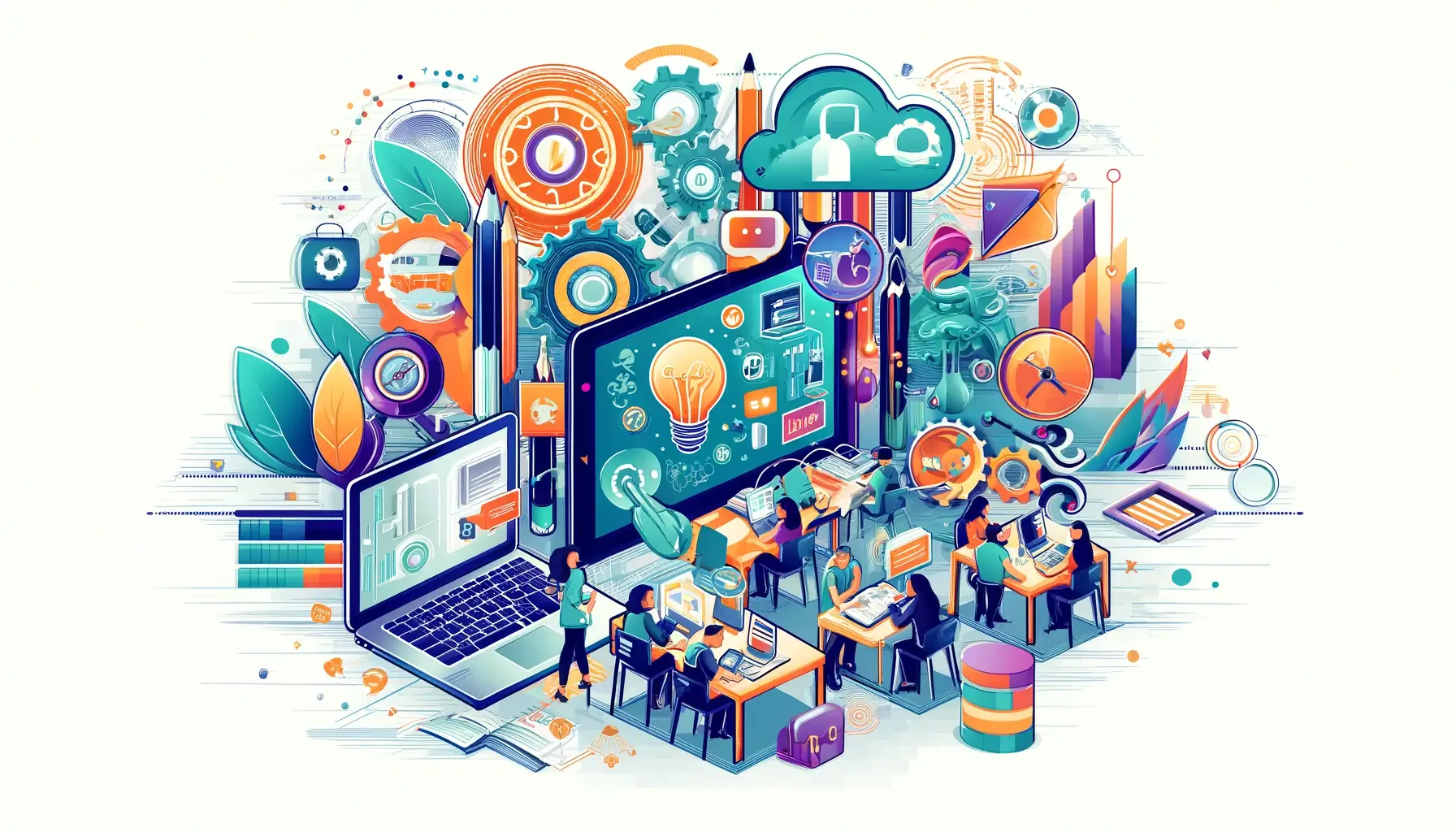
In this fast-changing world, where technology changes every other second, continuous learning is no more an asset but a need without which professionals cannot succeed in their careers and contribute valuably to the organization. While technology learning has so many resources and methodologies, yet it’s quite a task to pick a few strategies over the others. A few best practices the professionals engaged in the learning must fine-tune for include:
- Set Clear Learning Goals: The first thing that should be done is to identify clear and achievable goals. If at all it is about mastering a new programming language, understanding some particular technology, or acquiring certification, in these cases, definite goals set help maintain focus and, at the same time, gauge forward movement.
- Embrace a Blended Learning Approach: Mastery of learning a technology is best achieved when it includes a variety of sources and formats. It may incorporate MOOCs for the basics, webinars and workshops for professional insights, and hands-on projects for the actual professional application, and other related ways. It styles the multimodal format of learning.
- Prioritize Learning by Doing: Theoretical knowledge is good, and the actual depth in understanding comes from applied knowledge gained. Real-world projects, hackathons, or open-source projects can provide practical experience that drives a deeper understanding to hone one’s skills.
- Leverage Peer Learning and Mentorship: It values the learning process since, whether through discussion among each other or with a facilitator, a tutor is able to offer an in-depth learning experience. While peers assist in the exchange of ideas and collaborative problem-solving, mentors deal with students on a one-on-one platform in that they give individual guidance and provide insight and encouragement from personal experience and expertise.
- Stay Informed About Industry Trends: However, in this fast-changing and innovating world of technology, every professional should be able to find out the last trends, emerging technologies, and best practices that pride the industry. They should also be in a position to place learning efforts in areas where most relevance and impact are much realized.
- Utilize Quality Resources: With so much learning material available, one has to pick from the best of the lot. Accredited courses offered online or published works of established authors in the industry might carry with them reliable and valuable knowledge.
- Incorporate Microlearning: Busy professionals would benefit greatly from targeted, short learning sessions that can easily be fitted into their daily plan, which won’t allow them to take over the whole schedule. Examples could include watching a tutorial for a few minutes, reading an article, or practicing a specific skill for a short time.
- Reflect and Adjust: Regular reflection on what was learned and how the material can be applied will likely greatly help the development of understanding and retention. Stay open to making changes in your learning plan if you are progressing, changing your goals, or if something occurs with the subject to keep your efforts germane and on task.
- Cultivate a Growth Mindset: The most successful technology learners bring what is called a growth mindset to their learning. They value effort, view challenges as something to plunge into with gusto, and see failures as opportunities to learn something new. They thus adopt persistence, curiosity, and resiliency against the trying complexities of the tech world.
- Make Learning a Habit: The more you integrate learning into your life, the more you grow and develop. Even when the time that is accorded to learning is very little, having special time for that each day ends up ensuring that there is a considerable accumulation of knowledge after some time.
This will enable technologists to derive full value from their learning investment in practice, stay ahead in their field, and be able to contribute to the success of innovation within the organization. At DM WebSoft LLP, we inspire our team, imbuing these virtues, as it will let them adjust in the workplace for sustained growth and technological perfection.
Case Studies and Real-Life Examples
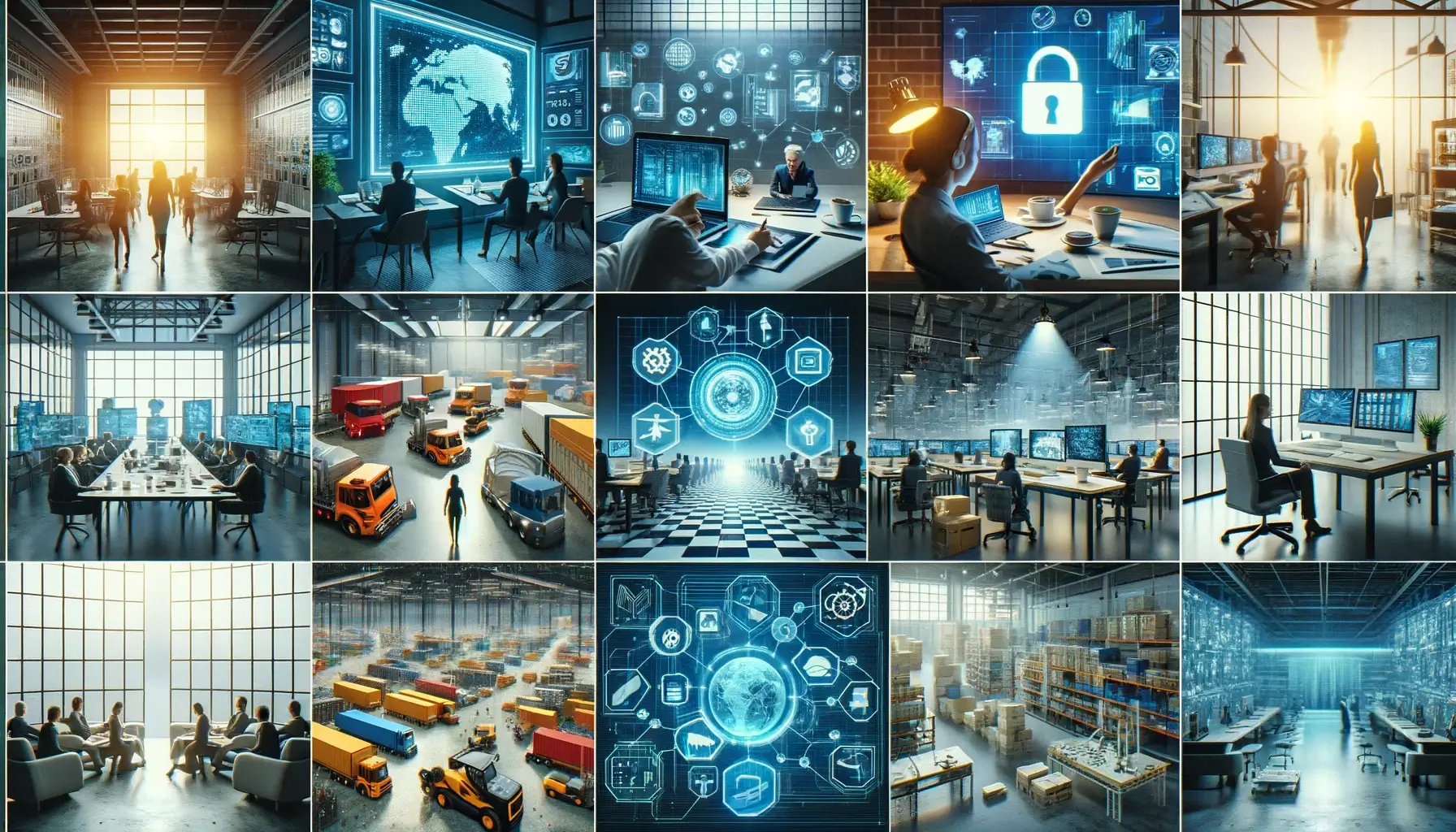
The case studies, as well as real-life examples, set a powerful testament to the effect that lifelong learning and adaptability in technology hold on the lives of people. They bring out the practical application of knowledge of theory and its tangible benefits of being updated with what the technology has to offer. This paper gives the following examples: These are set to show how continuous tech education in professional settings and adoption of technological change bear fruitful results.
Case Study 1: Implementing Agile Methodologies
Background: This company was a software development entity. It faced the pressing issue of delays in the projects and the shoot-ups of costs. It was turning inefficient due to the rigidity offered by traditional waterfall methodologies in terms of responding to changes.
Intervention: The company implemented Agile methodologies with an almost exaggerated focus on continuous improvement, flexibility, and heeding to the feedback of the consumers of its products. The employees of the company underwent thorough Agile training concerning the Agile Principles, Scrum practices, and Adaptive Project Management.
Outcome: With Agile being implemented, time to market of new software releases was cut by 40%; customer satisfaction improved considerably. It has led to an increase in project management efficiency and resource allocation with strong flexibility and priority for changing tasks.
Case Study 2: Upskilling for Cloud Adoption
Background: An IT services company identified already for a long time that there was a demand for cloud-based solutions within the client companies but was not in a position to offer such new service possibilities for years.
Intervention: The organization brought to its employees the relevant upskilling program on the basis of cloud technologies, among which were AWS, Azure, and Google Cloud Platform. Employees studied online in the form of courses, received certificates, and got practical skills with cloud services and architecture in projects.
Outcome: These upskilling efforts expanded the offerings that the firm had under its services, enabling them to venture into the lucrative cloud service market. The strategic move ensued in the attraction of new clients at the same time stamping the reputation of the firm as an IT service provider firm with versatility and forward thinking.
Case Study 3: Embracing Data Analytics for Retail Innovation
Background: The retail chain was not able to get a clear understanding of customers’ behavior, preferences, and influences, which directly resulted in failure to appropriately manage marketing activity, including appropriate.
Intervention: The organization purchased an investment in data analytical tools and conducted training programs for its employees on how to interpret and undertake analytics with data. This would empower the team to look into customer data and leverage insights for making decisions.
Outcome: Adoption of data analytics yielded a 25% increase in sales and cut-off in inventory costs by 15%. Better prediction of customer trends and handling of inventories rolled up to higher customer satisfaction and operational efficiency.
Case Study 4: Digital Transformation in Healthcare
Background: Among others, the region had a health system heading, which struggled with systems that were out of date, posing problems for patient care and operational efficiency.
Intervention: It formulated a digitization agenda that included the adoption of electronic health records (EHRs), telemedicine, and new AI-powered diagnostic technologies. It informed the staff of the new digital technologies in the delivery of consumer service.
Outcome: The digitalization of the organization was related to better patient care, expressed by a reduction in service time and an increase in diagnostic precision. The appearance of telemedicine services provided vast opportunities for rural population patients to obtain timely medical assistance without traveling beyond their home region.
These case studies underscore the value of investing in continuous learning and technological adaptation. This opens up opportunities for the organization and innovation, while keeping the competition in constant check with change and developing a culture of continuous improvement. Success stories like these motivate us at DM WebSoft LLP, and we continue contributing to our learning, adopting technological advancements, and offering par excellence solutions to our customers.
Conclusion
Meanwhile, with the always-changing landscape of technology, the need for lifelong learning and further adaptation becomes even more imperative. In this lifelong journey, knowledge acquisition is not the process of accumulating facts, rather than continuous growth, innovation, and transformation. Case studies and strategies have indicted the deep impact a commitment toward learning and adaptability can have on individuals, organizations, and wider industries.
An invitation to the lifelong learning journey, both personally and professionally, for the technology professional. It’s about relevance, pushing that edge of what’s possible, and moving forward with a ferocious curiosity and commitment to change. Such deep values inculcated in culture make organizations like DM WebSoft LLP better poised than the rest for navigating the complexities of the digital age. They become the change agents who bring innovation to set new benchmarks for excellence in technology.
Last but not least, it is continuous exploration, resilience in times of change, and the biggest commitment to never give up in the personal and professional growth process. These are some of the markers that form the technology lifelong learning path. And with that said, I would like to call all of us to look into the future with a lot of optimism, knowing that every step that we make forward is another step towards the actualization of our untapped potential and, for the lucky ones, the realization of the infinite possibilities that technology has to offer.
In this regard, our readers, clients, and colleagues are invited to be part of this continuing learning and adaptive journey with us. Together, we will learn how these technology advancements and changes in the tech landscape are influencing and changing the very way this world works. At DM WebSoft LLP, we are committed to this path, and we invite you to embark on this transformative journey with us.
In technology, this refers to continuing to apply knowledge and developing new skills or technologies in an appropriate manner to remain relevant in the competitive market.
Staying updated with the latest tech trends ensures that professionals have exposure to new tools and methodologies that lead to innovation, increased efficiency, and better career opportunities.
Some such services include online courses, podcasts, and microlearning with which professionals can make the most of learning that adjusts with their routine and short, manageable sessions in line with their goals.
Improvement in the culture of learning at the workplace will require giving and sharing training resources, including being supportive of professional development activities.
Yes, these continuous learning activities not only help equip the working professionals for the latest advancements but also provide them with opportunities to have career advancements, which might possibly lead them towards leadership role of their respective departments.
Get Started Now !
What’s the Process ?
Request a Call
Consultation Meeting
Crafting a Tailored Proposal
Get Started Now !
Real Stories, Real Results. Discover What Our Clients Say

Working with DM WebSoft LLP was a game-changer for our business. Their technical prowess and innovative solutions transformed our online presence. A highly recommended web development agency with a stellar track record.

We are thrilled with the results DM WebSoft LLP delivered. Their deep understanding of web development coupled with years of expertise ensured a seamless and visually stunning website. True professionals!

In a digital age where first impressions matter, DM WebSoft LLP crafted a website that speaks volumes. The team’s attention to detail and commitment to quality set them apart. Thank you for making our vision a reality.

DM WebSoft LLP’s team demonstrated unparalleled expertise. Their ability to navigate complex technical challenges with ease is truly commendable. Choosing them for our web development needs was the best decision.

Exceptional service, unmatched skills! DM WebSoft LLP stands out as a leading web development agency. Their collaborative approach and commitment to excellence make them our go-to partner for all things web-related.

DM WebSoft LLP turned our ideas into a digital masterpiece. The seamless communication and timely delivery of our project showcased their professionalism. Highly impressed with the level of creativity and skill.

Our experience with DM WebSoft LLP was nothing short of amazing. From concept to execution, their team provided top-notch web development services. A reliable partner for businesses looking to elevate their online presence.

DM WebSoft LLP’s team of tech experts is second to none. Their wealth of experience reflects in the quality of their work. Our website not only meets but exceeds industry standards, thanks to their dedication.

Choosing DM WebSoft LLP was the best investment for our web development needs. Their team’s proficiency, coupled with a customer-centric approach, made the entire process smooth and enjoyable. A pleasure to work with!

